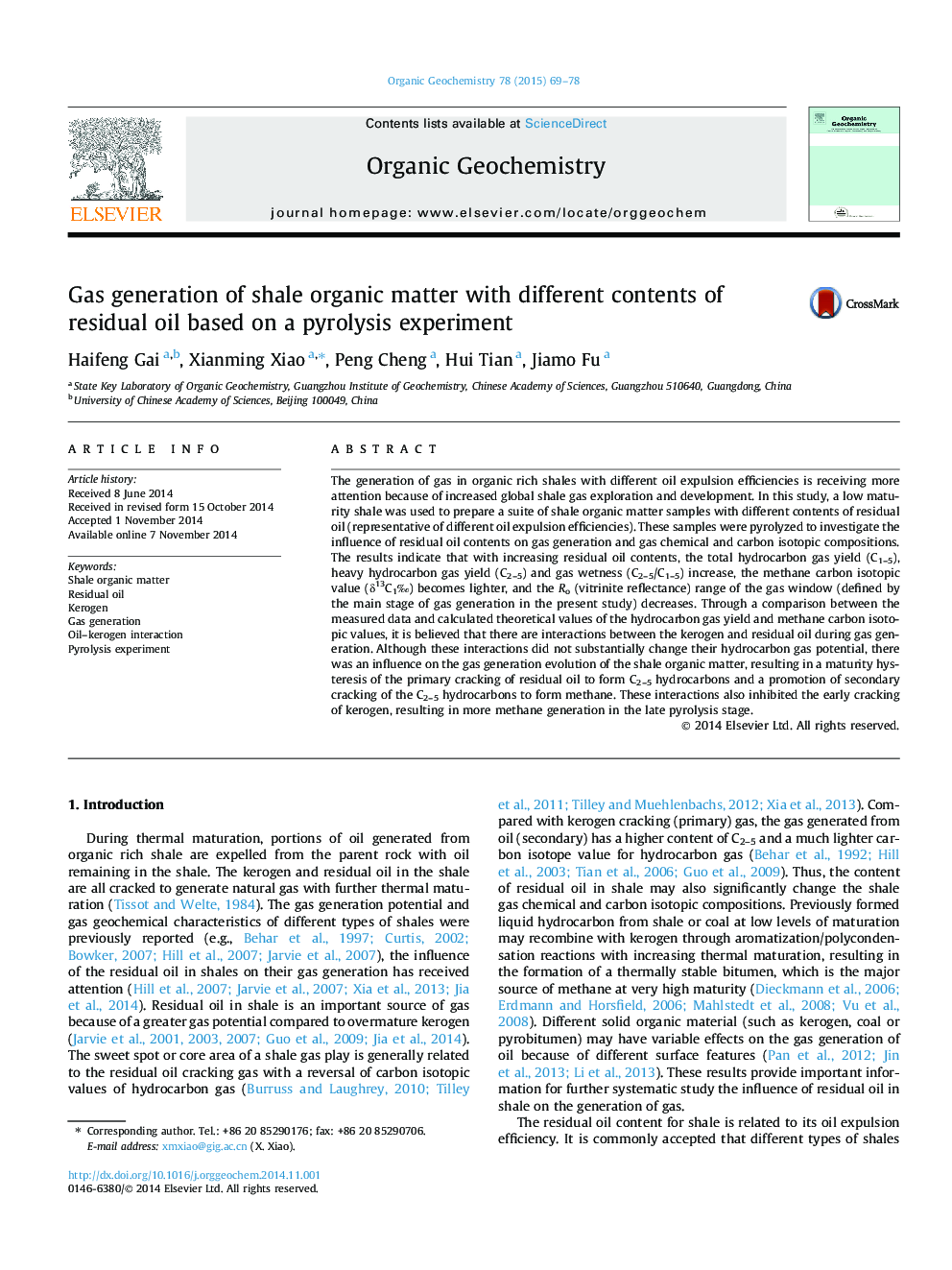| Article ID | Journal | Published Year | Pages | File Type |
|---|---|---|---|---|
| 5162665 | Organic Geochemistry | 2015 | 10 Pages |
Abstract
The generation of gas in organic rich shales with different oil expulsion efficiencies is receiving more attention because of increased global shale gas exploration and development. In this study, a low maturity shale was used to prepare a suite of shale organic matter samples with different contents of residual oil (representative of different oil expulsion efficiencies). These samples were pyrolyzed to investigate the influence of residual oil contents on gas generation and gas chemical and carbon isotopic compositions. The results indicate that with increasing residual oil contents, the total hydrocarbon gas yield (C1-5), heavy hydrocarbon gas yield (C2-5) and gas wetness (C2-5/C1-5) increase, the methane carbon isotopic value (δ13C1â°) becomes lighter, and the Ro (vitrinite reflectance) range of the gas window (defined by the main stage of gas generation in the present study) decreases. Through a comparison between the measured data and calculated theoretical values of the hydrocarbon gas yield and methane carbon isotopic values, it is believed that there are interactions between the kerogen and residual oil during gas generation. Although these interactions did not substantially change their hydrocarbon gas potential, there was an influence on the gas generation evolution of the shale organic matter, resulting in a maturity hysteresis of the primary cracking of residual oil to form C2-5 hydrocarbons and a promotion of secondary cracking of the C2-5 hydrocarbons to form methane. These interactions also inhibited the early cracking of kerogen, resulting in more methane generation in the late pyrolysis stage.
Related Topics
Physical Sciences and Engineering
Chemistry
Organic Chemistry
Authors
Haifeng Gai, Xianming Xiao, Peng Cheng, Hui Tian, Jiamo Fu,
